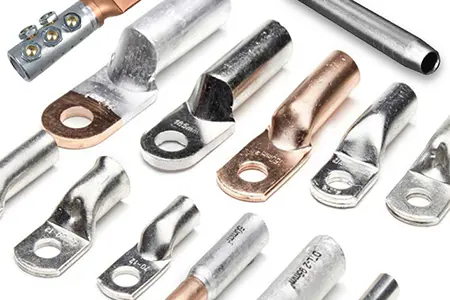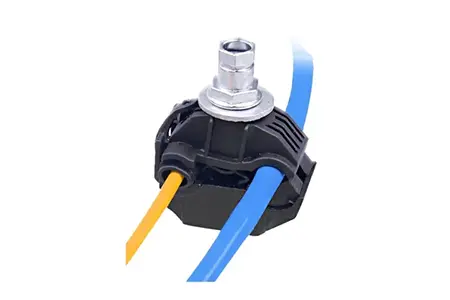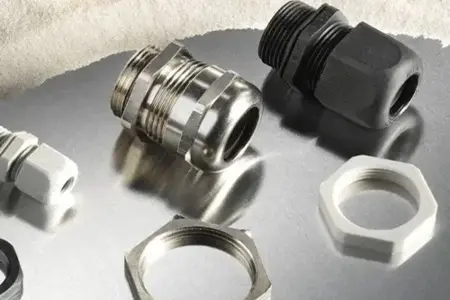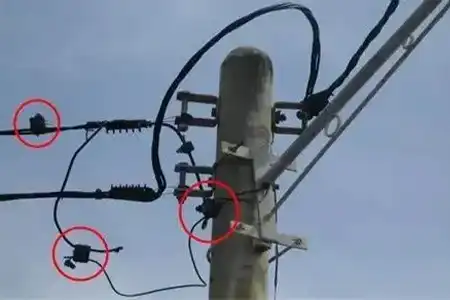Finding the Perfect Anchor Tension Clamp: 5 Key Tips from Expert Engineers
When it comes to securing cables and wires, the right anchor tension clamp is essential. Choosing the perfect clamp not only ensures the stability and safety of your installations but also enhances their longevity. This article will guide you through everything you need to know about anchor tension clamps, helping you make an informed decision.
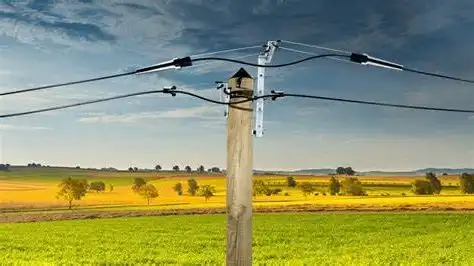
What is an Anchor Tension Clamp?
A cable clamp is a simple device for clamping or connecting cables. In our online store, you can find a large number of necessary clamps for laying and securing cable lines indoors and outdoors as well as for construction when working with high-voltage power lines. The wide range of different types of clamps covers all types of clamping devices. Anchor clamps are the most common category of such devices. Cable anchor clamps are
a special type of device designed to hold wires and cable lines. The device is used to anchor and tension power lines (including carrier lines) at ends, corners, and light poles. Anchor clips are suitable for branch connections at building entrances. The device is typically used to anchor and tension subscriber communication lines between objects.
The main advantages of anchor tension clamps
Today, fiber optic cables are popular in all communication networks. They are carriers of information between active devices. When buying such products, it is necessary to ensure that their transmission parameters correspond to the type of network and equipment that will receive them. To complete the installation, you need to purchase the relevant products. For example, cable tension clamps for overhead cabling options. Fiber optic cables have a wide range of applications:
- Long-distance and city telephone communications would not work without them;
- They are needed to transmit signals over long distances at high speeds;
- Used to form lines, etc.
The technique of mounting fiber optic cables on supports using bracing and tension clips is very popular.
The main advantages of these clamps are:
- High strength;
- small size.
- Easy handling;
- Quick installation of the wiring.
Materials Used in Anchor Tension Clamps
Aluminum Clamps
Aluminum clamps are lightweight and corrosion-resistant, making them suitable for various environments.
Steel Clamps
Steel clamps offer high strength and durability, ideal for heavy-duty applications.
Composite Clamps
Composite clamps combine different materials to provide a balance of strength, durability, and corrosion resistance.
Applications of Anchor Tension Clamps
Tension clamps serve to hold the wires securely on the supports. They must be mounted at the beginning and end of the track and turnouts. They are also used in straight sections, where tensile loads on the wires are high, where there are differences in the heights of the connection points, and so on.
Different types of anchoring clips are particularly popular. These are designed with stainless steel cables, fixing wedges, and high-strength housings. Cable clamps with supporting cables allow you to install cables quickly without having to separate the power components and strip the wires. On clamped cables, plastic rings provide insulation for the support element when attached to the bracket. The anchoring clamp creates the necessary tension within the span of the common wire. Anchoring
Used for tensioning methods. An example is the anchoring tension clamp H24. It secures and holds flat, self-supporting dielectric cables in a taut state when making communication lines along lighting and power transmission poles.
They are used directly on highways and their branches. They quickly and easily secure the wires to the supports.
The installation of these clamps does not require the use of special tools; for stable and reliable fixing, the stainless steel cables are provided with locating fasteners on both sides.



5 Key Points to Finding the Perfect Anchor Tension Clamp
Key Point 1: Material Quality
Importance of Durable Materials
The material of the anchor tension clamp plays a significant role in its durability and performance. Clamps made from high-quality materials like stainless steel or aluminum alloy offer better resistance to corrosion and wear.
Evaluating Material Strength
Ensure that the clamp material can withstand environmental factors such as extreme temperatures, moisture, and UV exposure. This is crucial for installations in harsh outdoor environments.
Key Point 2: Design and Compatibility
Versatile Design
A well-designed anchor tension clamp should be versatile enough to accommodate various cable types and sizes. Look for clamps with adjustable features to ensure a secure fit.
Compatibility with Cables
The clamp should be compatible with the specific type of cable you are using. Check the manufacturer’s specifications to ensure a proper match.
Key Point 3: Ease of Installation
User-Friendly Installation Process
Choose anchor tension clamps that are easy to install. This will save time and reduce the risk of installation errors. Clamps with clear instructions and minimal tools required are ideal.
Maintenance Considerations
Opt for clamps that require minimal maintenance. This ensures long-term reliability and reduces the need for frequent replacements.
Key Point 4: Load Capacity
Assessing Load Requirements
Determine the load capacity needed for your specific application. The clamp should be able to handle the tension and weight of the cables without failing.
Safety Margins
Select clamps with a safety margin that exceeds your load requirements. This provides extra security and reduces the risk of failure.
Key Point 5: Cost-Effectiveness
Balancing Quality and Cost
While it’s essential to stay within budget, don’t compromise on quality. Investing in high-quality anchor tension clamps will save money in the long run by reducing maintenance and replacement costs.
Comparing Prices
Compare prices from different suppliers to find the best deal. Ensure that the cost reflects the quality and performance of the clamp.
Conclusion
Anchor clamps are almost always necessary for a successful cable installation and are intended to keep the line in “chord”. The standard distance to the nearest support should not exceed 50m, but everything is individual, as the weight load depends on the connecting part. Anchor tension clips are mounted directly to the building or any other support point using brackets or other anchoring devices. Due to the external insulation protection, the connection points remain completely closed, thus preventing damage.
Contact us
You can find the clamps you need on our website. It’s worth remembering that when choosing a fixture, it’s also important to focus on the number of connecting cores. Our team managers will help you understand and, if necessary, purchase any type of cable clamp. In the catalog on the site are displayed accessories for the installation of wires. We will provide buyers with the necessary information about each type of clamp. Just contact us!
FAQs
Q1: What is the primary function of an anchor tension clamp?
A1: The primary function of an anchor tension clamp is to secure and hold cables or wires in place, ensuring they remain taut and functional.
Q2: How do I determine the load capacity needed for my application?
A2: To determine the load capacity needed, assess the weight and tension requirements of your specific cables and application.
Q3: Can anchor tension clamps be used in harsh environments?
A3: Yes, many anchor tension clamps are designed to withstand harsh environmental conditions, including extreme temperatures and corrosion.
Q4: What are the most common materials used in these clamps?
A4: Common materials include aluminum, steel, and composite materials, each offering different advantages depending on the application.
Q5: How often should anchor tension clamps be inspected?
A5: Anchor tension clamps should be inspected regularly, with the frequency depending on the environmental conditions and the criticality of the application.
Q6: What materials are best for anchor tension clamps?
A6: High-quality materials like stainless steel and aluminum alloy are best for anchor tension clamps due to their durability and resistance to corrosion.
Q7: How do I determine the right load capacity for my clamp?
A7: Assess the weight and tension requirements of your specific application and choose a clamp with a load capacity that meets or exceeds these needs.
Q8: Are anchor tension clamps easy to install?
A8: Many modern anchor tension clamps are designed for easy installation, with clear instructions and minimal tools required.
Q9: Can I use the same clamp for different cable types?
A9: It depends on the design of the clamp. Look for versatile clamps that can accommodate various cable types and sizes.
Q10: How do I maintain my anchor tension clamps?
A10: Choose clamps that require minimal maintenance. Regularly inspect them for signs of wear and replace them as needed to ensure long-term reliability.
Website: https://www.wzjelec.com/
Anchor Tension Clamp: Anchor Clamp – wzjelec.com
Email: rose@sunjelec.comAuther: Leb

